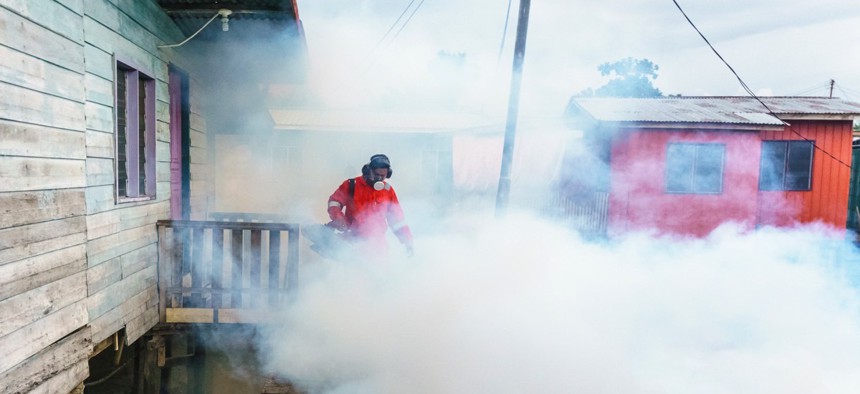How Prepared Is Your State for the Next Public Health Disaster?

Overall, public health systems in this nation are in a better state than they were several years ago, but major inequalities persist.
Large-scale health threats are on the rise.
A changing climate will mean more weather variability, increasing the risk for devastating natural disasters. Rapid globalization has meant that diseases like Ebola and Zika are just a plane ride away. Growing antibiotic resistance may lead to many of our most effective medications becoming completely obsolete.
So, on any given day, is our public health system ready to face these dangers head-on?
That’s what the National Health Security Preparedness Index seeks to find out. The project was originally developed by the U.S. Centers for Disease Control and Prevention but is now put together as a collaboration between the University of Kentucky and the Robert Wood Johnson Foundation.
Based on 139 different criteria—ranging from efficacy of hazard planning in public school systems to sheer numbers of doctors nurses and other emergency personnel in hospitals, to rate of flu vaccinations—the Index grades the health preparedness for the United States as a whole, as well as rendering a score for each individual state.
Now, the 2017 numbers are out.

The key takeaway is this: Overall, public health systems in this country are in a better state than they were several years ago. The United States scored a 6.8 out of 10 possible points, which is a 1.5 percent improvement compared to last year and a 6.3 percent improvement since the first Index scores were released in 2013. And, a total of 33 states improved their overall performance compared to last year.
And, the Index finds that there are several criteria, particularly at the state and local level that show promise. By this measure, the largest gains in overall health security are found in community-based planning and engagement, an area that the U.S. has struggled with historically.
But, a caveat must be placed on all that improvement—stark inequalities in preparedness persist across the 50 states and Washington, D.C. For example, a 32 percent gap separates the state that scored the highest—Vermont at 7.8—and the state that scored the lowest—Alaska, at 5.9. And, in general, the states in the Northeast and Pacific Coast score better than states in the Deep South and Mountainous West regions.
Find out how prepared your state really is.
Quinn Libson is a Staff Correspondent for Government Executive’s Route Fifty.

NEXT STORY: Nevada Fights the Latest Attempt to Give It the Nation’s Nuclear Waste






